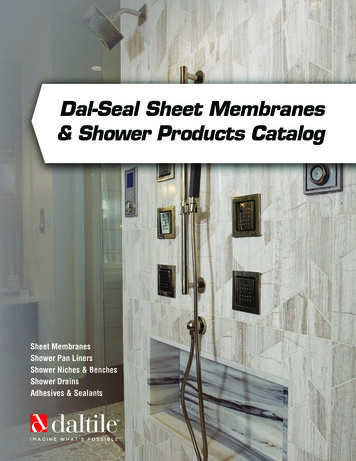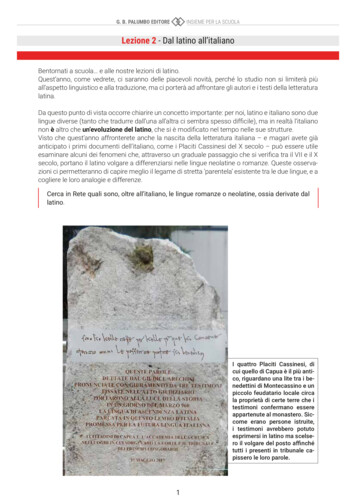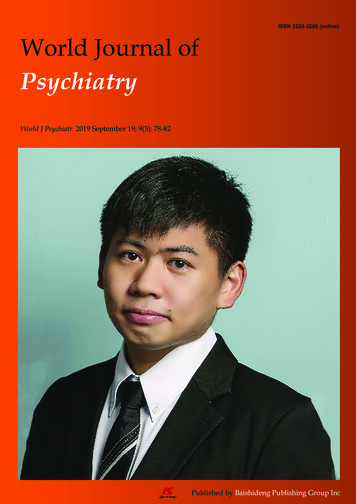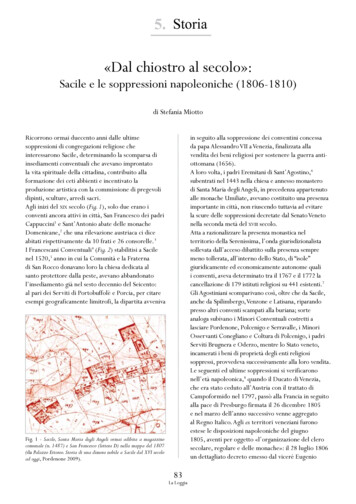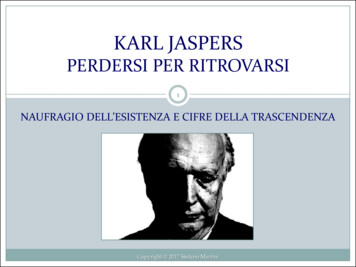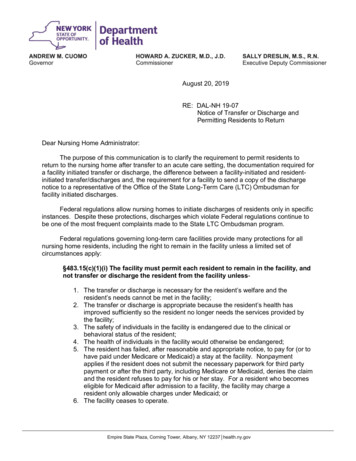
Transcription
August 20, 2019RE: DAL-NH 19-07Notice of Transfer or Discharge andPermitting Residents to ReturnDear Nursing Home Administrator:The purpose of this communication is to clarify the requirement to permit residents toreturn to the nursing home after transfer to an acute care setting, the documentation required fora facility initiated transfer or discharge, the difference between a facility-initiated and residentinitiated transfer/discharges and, the requirement for a facility to send a copy of the dischargenotice to a representative of the Office of the State Long-Term Care (LTC) Ombudsman forfacility initiated discharges.Federal regulations allow nursing homes to initiate discharges of residents only in specificinstances. Despite these protections, discharges which violate Federal regulations continue tobe one of the most frequent complaints made to the State LTC Ombudsman program.Federal regulations governing long-term care facilities provide many protections for allnursing home residents, including the right to remain in the facility unless a limited set ofcircumstances apply:§483.15(c)(1)(i) The facility must permit each resident to remain in the facility, andnot transfer or discharge the resident from the facility unless1. The transfer or discharge is necessary for the resident’s welfare and theresident’s needs cannot be met in the facility;2. The transfer or discharge is appropriate because the resident’s health hasimproved sufficiently so the resident no longer needs the services provided bythe facility;3. The safety of individuals in the facility is endangered due to the clinical orbehavioral status of the resident;4. The health of individuals in the facility would otherwise be endangered;5. The resident has failed, after reasonable and appropriate notice, to pay for (or tohave paid under Medicare or Medicaid) a stay at the facility. Nonpaymentapplies if the resident does not submit the necessary paperwork for third partypayment or after the third party, including Medicare or Medicaid, denies the claimand the resident refuses to pay for his or her stay. For a resident who becomeseligible for Medicaid after admission to a facility, the facility may charge aresident only allowable charges under Medicaid; or6. The facility ceases to operate.
To demonstrate that any of the circumstances permissible for a facility to initiate transferor discharge as specified in 1-6 above have occurred the medical record must showdocumentation of the basis for the transfer or discharge. This documentation must be madebefore, or as close as possible to the actual time of transfer or discharge.To demonstrate 1 and 2 above for permissible facility-initiated transfer or discharge, theresident’s physician must document information about the basis for transfer or discharge.Additionally, for circumstance 1 above, the inability to meet the resident’s needs, thedocumentation made by the resident’s physician must include: The specific resident needs the facility could not meet;The facility efforts to meet those needs; andThe specific services the receiving facility will provide to meet the needsof the resident which cannot be met at the current facility.Facilities are required to determine their capacity and capability to care for theresidents they admit, so in the absence of atypical changes in residents’ conditions,it should be rare that facilities who properly assess their capacity and capabilityof caring for a resident then discharge that resident based on the inability to meettheir needs. Therefore, facilities should not admit residents whose needs theycannot meet based on the facility assessment.Facility-Initiated Transfers and Discharges: A transfer or discharge which the residentobjects to, did not originate through a resident’s verbal or written request, and/or is not inalignment with the resident’s stated goals for care or preferences.In situations where the facility has decided to discharge the resident while the resident isstill hospitalized, the facility must send a notice of discharge to the resident and residentrepresentative and must also send a copy of the discharge notice to a representative of theOffice of the State LTC Ombudsman. Notice to the Office of the State LTC Ombudsman mustoccur at the same time the notice of discharge is provided to the resident and residentrepresentative, even though, at the time of initial emergency transfer, sending a copy of thetransfer notice to the ombudsman only needed to occur as soon as practicable as describedbelow.For any other types of facility-initiated discharges, the facility must provide notice ofdischarge to the resident and resident representative along with a copy of the notice to theOffice of the State LTC Ombudsman at least 30 days prior to the discharge or as soon aspossible. The copy of the notice to the ombudsman must be sent at the same time notice isprovided to the resident and resident representative.Emergency TransfersWhen a resident is temporarily transferred on an emergency basis to an acute carefacility, notice of the transfer may be provided to the resident and resident representativeas soon as practicable, according to 42 CFR 483.15(c)(4)(ii)(D). Copies of notices foremergency transfers must also still be sent to the ombudsman, but they may be sentwhen practicable, such as providing a list of residents on a monthly basis.To further help facilitate this process, the contact information for the Long-Term CareOmbudsman Program by county has been provided as an attachment to this correspondence.
For further guidance, please refer to Centers for Medicare And Medicaid Services (CMS)S & C 18-08-NH: An Initiative to Address Facility Initiated Discharges that Violate FederalRegulations dated December 22, 2017.Resident-Initiated Transfers and Discharges: Means the resident or, if appropriate, theresident representative has provided verbal or written notice of intent to leave the facility.The medical record must contain documentation or evidence of the resident’s or residentrepresentative’s verbal or written notice of intent to leave the facility. A resident’s expression ofa general desire or goal to return home or to the community or elopement of a resident who iscognitively impaired should not be taken as notice of intent to leave the facility. Dischargesfollowing completion of a skilled rehabilitation stay may not always be a resident-initiateddischarge. In cases where the resident may not object to the discharge, or has not appealed it,the discharge could still be involuntary and must meet all the requirements of the regulation.For example, it is not permissible to discharge a resident because they have completed shortterm rehabilitation and now require long term placement. In New York State, all beds in anursing home are dually Medicare and Medicaid certified; therefore, there is no delineationbetween a short-term rehabilitation bed and a long-term care bed. Discharging for this reason isprohibited.For resident-initiated transfers or discharges that meet all the requirements of the law,sending a copy of the notice to the ombudsman is not required.Frequently Asked Questions (FAQs) related to Discharges Notices to the OmbudsmanProgram and facility-initiated discharges has been provided as an attachment to thiscorrespondence.We encourage all facilities to review their policies and procedures related to facility andresident-initiated transfers and discharges to ensure compliance with the requirements ofparticipation with CMS.The Division of Nursing Homes & ICF/IID Surveillance and the Office of the State LongTerm Care Ombudsman appreciate your efforts to ensure residents’ rights are promoted andprotected at your facility.Sincerely,Sheila McGarveyDirectorDivision of Nursing Homes& ICF/IID SurveillanceCenter for Health Care ProviderServices and OversightClaudette RoyalNew York State OmbudsmanNYS Office for the Aging
Contact Information for LTCOP/Discharge Notices by CountyCountySuffolkNassauBronx, Manhattan, Richmond, Kingsand QueensWestchester, Putnam, and RocklandColumbia, Dutchess, Greene, Orange,Sullivan, and UlsterAlbany, Fulton, Hamilton, Montgomery,Rensselear, Saratoga, Schenectady,Schoharie, Warren, WashingtonClinton, Essex, and FranklinJefferson Lewis and St. LawrenceHerkimer, Madison, Oneida, andOtsegoCayuga, Cortland, Onondaga, andOswegoBroome, Chenango, Delaware, TiogaTompkins, Chemung and SchuylerMonroe, Genesee, Livingston, Ontario,Orleans, Seneca, Wayne, Wyoming,YatesAllegany and SteubenCattaraugus, Chautauqua, Erie andNiagaraAgencyFamily Service League55 Horizon DriveHuntington, NY 11743Family and Children’s Association100 East Old Country RoadMineola, NY 11501Center for the Independence of the Disabled(CIDNY)841 Broadway, Suite 301New York, NY 10003Westchester Independent Living Center10 County Center Road Suite 203White Plains, NY 10607Long Term care Community Coalition-HudsonValley LTC Ombudsman Program7 Pine Woods Road, Suite 3CHyde Park, NY 12538Catholic Charities Senior and Caregiver Services1462 Erie Boulevard, 2nd FloorSchenectady, NY 12305North Country Center for Independence80 Sharron AvenuePlattsburgh, NY 12901Northern Regional Center for Independent Living210 Court Street #107Watertown, NY 13601Resource Center for Independent Living409 Columbia Street PO Box 210Utica, NY 13503-0210ARISE Child and Family Service635 James St.Syracuse, NY 13203Action for Older Persons200 Plaza Dr. Suite BVestal, NY 13850Tompkins County Office for the Aging214 West Martin Luther King Jr./State St.Ithaca, NY 14850Lifespan1900 South Clinton Avenue Suite 13Rochester, NY 14618AIM Independent Living Center271 E. First StreetCorning, NY 14830People Inc.2747 Main Street, 2nd FloorBuffalo, NY 14214Email for Discharge 845-229-4680 8-562-1732Ombudsman@nrcil.net315-785-8703 org585-244.8400 x114troloson@aimcil.com607-962-8225 -5645
Frequently Asked Questions Regarding Discharge Notices to the Ombudsman Program1. Q: Should I send information with the discharge notice to LTCOP such as care plans,discharge summary, doctor’s notes?A: The discharge notice is the only document that should be provided to theOmbudsman program.2. Q: Is discharge from short-term rehab to another facility for long-term care consideredfacility-initiated?A: All nursing home beds in NYS are certified for both short-term and long-term care. Ifthe resident did not specifically request the discharge and it is not in alignment withtheir admission and desired outcomes, then it is facility-initiated.3. Q: What is the difference between a facility-initiated and involuntary discharge?A: Regulations limit the circumstances under which a facility can initiate a transfer ordischarge, thus protecting nursing home residents from involuntary discharge.In the following limited circumstances, facilities may initiate transfers or discharges:1. The discharge or transfer is necessary for the resident’s welfare and the facilitycannot meet the resident’s needs.2. The resident’s health has improved sufficiently so that the resident no longerneeds the care and/or services of the facility.3. The resident’s clinical or behavioral status (or condition) endangers the safetyof individuals in the facility.4. The resident’s clinical or behavioral status (or condition) otherwise endangersthe health of individuals in the facility.5. The resident has failed, after reasonable and appropriate notice, to pay, or havepaid under Medicare or Medicaid, for his or her stay at the facility.6. The facility ceases to operate.4. Q: Where do I obtain the address for my local Ombudsman Program?A: For your convenience the addresses of the Ombudsman Program is included as anAttachment to this DAL.5. Q: What is the correct agency contact information to be provided on the discharge noticefor residents with mental illness or developmental disabilities?A. Disability Rights New York725 Broadway, Suite 450Albany, New York 12207Email: Mail@DRNY.orgPhone: 518-432-7861 or 1-800-993-8982
6. Q: When can I send a list of residents discharged or transferred to LTCOP?A: The list of residents can be sent for emergency transfers suchas transfer to an acute care setting. This list can be sent on amonthly basis. Residents being discharged, including residents discharged after asubacute rehabilitation stay, require a discharge notice and this notice needs to besent to LTCOP at the same time it is provided to the resident/representative.7. Q: When insurance coverage stops, and a resident is being discharged, is thisconsidered resident-initiated?A: A resident-initiated discharge should be in alignment with the resident’s goals foradmission and desired outcomes.8. Q: If a resident is sent to the hospital due to the resident’s clinical or behavioral statusthat endangers the health and/or safety of other individuals in the facility, do I need toissue a Discharge/Transfer Notice?A: A hospital is not an appropriate discharge location. Admission assessments are keyto ensuring the facility can care for the residents admitted. If there is evidence afacility cannot meet the resident’s needs, or the resident poses a danger to the healthand safety of his/herself or others, the facility must follow all the requirements as theyapply to discharge including the basis for discharge, provide notice to the resident,his/her representative and the LTCOP, reason for discharge, discharge location andappeal rights information. A facility’s determination not to permit a resident to returnmust not be based on the resident’s condition when originally sent to the hospital.
Watertown, NY 13601 Ombudsman@nrcil.net 315-785-8703 x228 Herkimer, Madison, Oneida, and Otsego Resource Center for Independent Living 409 Columbia Street PO Box 210 Utica, NY 13503-0210 Ombudsman@RCIL.com 315-272-1872 Cayuga, Cortland, Onondaga, and Oswego ARISE Child and Family Service 635 James St. Syracuse, NY 13203




